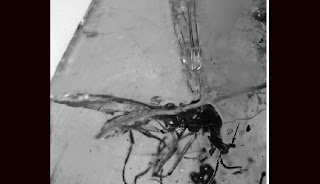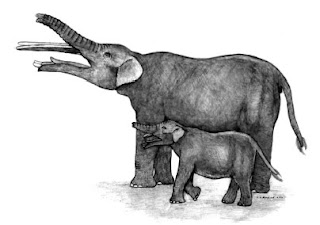Over on Panda's Thumb there is
an attack on the Scientist and Christian Francis Collins. Its author, Matt Young, reckons that Collins' faith is a God of the Gaps type of affair.
I don't like it when PT puts this kind of stuff up because it is
supposed to be a site that promotes science education - and these kind of personal attacks on one man's religious beliefs are no help whatsoever. Collins is one of the best advocates of good science that there is so why is Young trying to shoot such an own goal? It can only be because he has another agenda going on and someone as capable and distinguished as Francis Collins stands in the way.
Putting all that aside does Young actually have a point? Francis Collins moved from being an atheist to becoming a believer (Hmm, I wonder if that has anything to do with Young's agenda?) and one of his main reasons for doing so was the moral law - i.e. the fact that humans are moral creatures is a big pointer towards our divine purpose.
Collins believed that this moral nature defied an evolutionary explanation, but Young thinks otherwise hence the accusation of God of the Gaps. His
argument is much less impressive than he makes out. It is basically a repetition of the well established examples of altruism in the natural world (like those between related groups and also reciprocal altruism) as discussed in books like Dawkins' The Selfish Gene.
But these are not examples of morality. At best they are examples of evolution breaking the standard mould of survival of the fittest, and following on from that it is possible to think that this
may have been a first step towards true morality.
Which leads us to ask what morality really is? Well its a collection of ideas about what is right and what is wrong and the ability to make a choice between them. So the moral law is a partnership of the drawing a line between right and wrong AND the conscious decision-making about which path to take. Both these are a long way from the kind of thing Young is talking about. Social insects making instinctive self-sacrifices is not morality.
So could morality have evolved? I think the best argument would be that humans have brains that are capable of over-ruling our instinctive reactions with much deeper thought processes. From there the moral code could have evolved meme by meme. It's possible, but in a way I'm not sure it's all that relevent.
Our moral code is I think a divine meme given to us by God. He has created us with the ability to make choices and presented us with what those choices are. The fact that many of those choices go against our natural instincts and draw us towards God is a pointer to their divine origin. So when it comes down to it... Collins is probably right.
'It is not in heaven, that you should say, ‘Who will ascend to heaven for us and bring it to us, that we may hear it and do it?’ Neither is it beyond the sea, that you should say, ‘Who will go over the sea for us and bring it to us, that we may hear it and do it?’ But the word is very near you. It is in your mouth and in your heart, so that you can do it. See, I have set before you today life and good, death and evil. If you obey the commandments of the Lord your God that I command you today, by loving the Lord your God, by walking in his ways, and by keeping his commandments and his statutes and his rules, then you shall live and multiply, and the Lord your God will bless you'
Deuteronomy 30 v 12+
Postscript:
I've been reading some of Matt Young's other posts and there are times where he is much more balanced...
'The argument that science has disproved God, besides being wrong, puts religious believers who support science into an untenable position and risks alienating precisely those people whose support we desperately need'
























